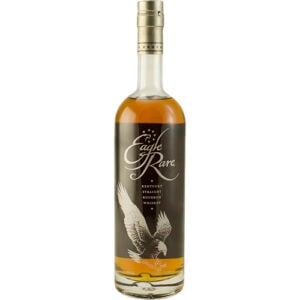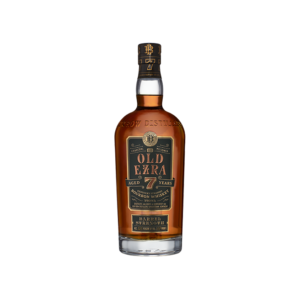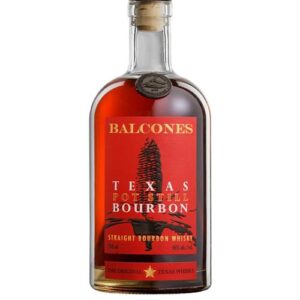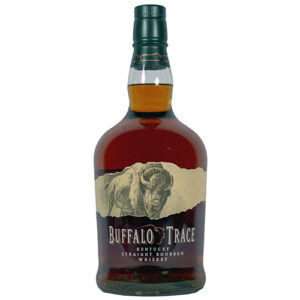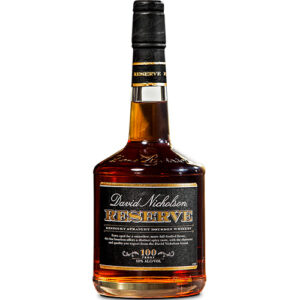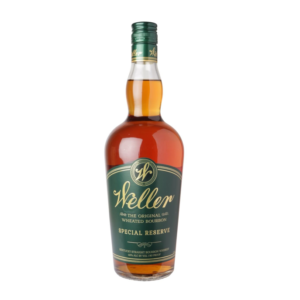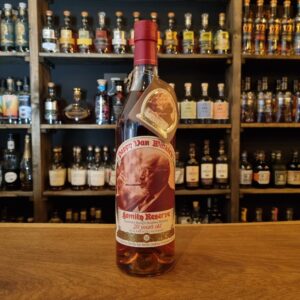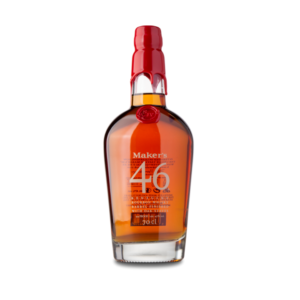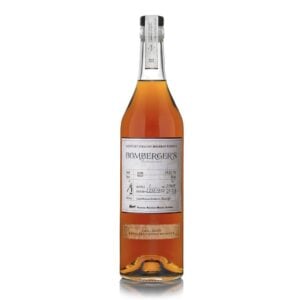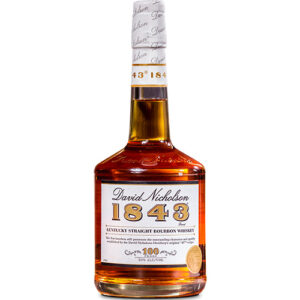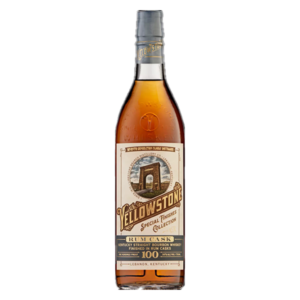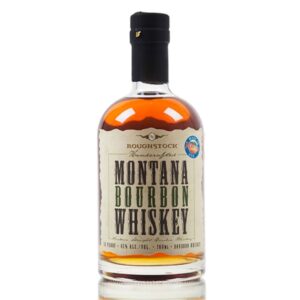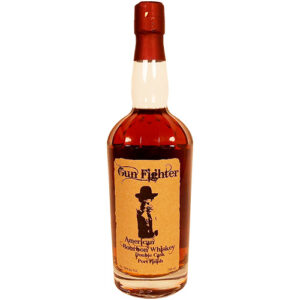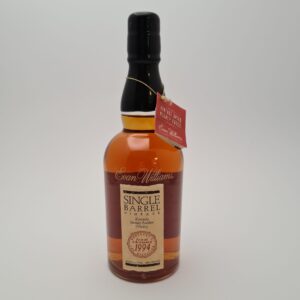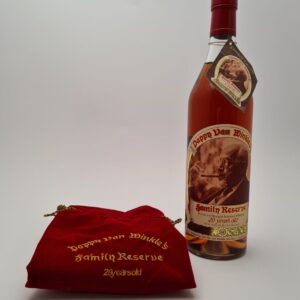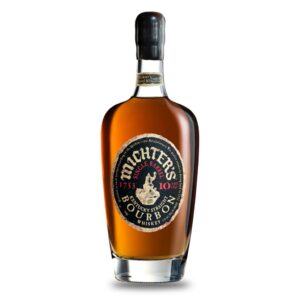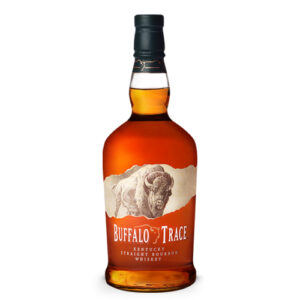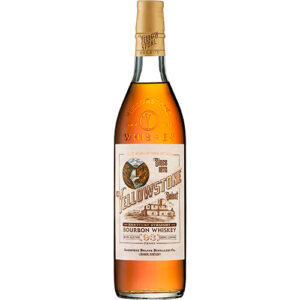Showing all 21 resultsSorted by popularity
Bourbon Whiskey – The Complete Guide
TL;DR: Quick Summary
- Bourbon whiskey is characterized by its rich, sweet flavor profile with notes of vanilla, caramel, and oak
- Primarily made from at least 51% corn and defined by aging in new, charred oak barrels
- Found in several styles, including traditional, high-rye, wheated, and single barrel
- Best enjoyed neat, with a splash of water, or in classic cocktails like Old Fashioned or Manhattan
Disclaimer: This guide is intended for informational purposes for adults over 18 years of age. Vault of Spirits encourages responsible alcohol consumption.
Introduction to Bourbon Whiskey
Bourbon whiskey has a rich history and fascinating craftsmanship behind it. From its origins in Kentucky to its global popularity today, this spirit has evolved to become one of the world’s most cherished distilled beverages.
This guide provides insights into the production, flavor notes, and enjoyment of bourbon whiskey, whether you’re a novice or experienced enthusiast.
As America’s native spirit, bourbon represents both cultural heritage and innovative distilling practices that continue to captivate drinkers worldwide.
How Did Bourbon Whiskey Originate?
From Past to Present
Bourbon’s origins date back to the late 18th century in the frontier territories that would later become Kentucky.
Scottish and Irish immigrants brought their distilling knowledge to America, adapting their techniques to local ingredients.
The abundance of corn in the region led to its prominence in the mash bill, creating a distinctly American spirit.
The name “bourbon” likely comes from Bourbon County, Kentucky, which was named to honor the French royal family during the American Revolutionary War.
Which Historical Milestones Shaped Bourbon?
The Bottled-in-Bond Act of 1897 was a landmark legislation that helped establish quality standards for bourbon production.
Prohibition (1920-1933) dealt a devastating blow to the bourbon industry, with many distilleries closing permanently.
The post-WWII era saw bourbon’s domestic popularity surge before experiencing a decline in the 1970s-80s.
The 1990s began the “bourbon renaissance,” with premium and craft bourbons revitalizing interest in the category.
How Has Bourbon Influenced Cultural Traditions?
The Kentucky Derby tradition of the Mint Julep has cemented bourbon’s place in American sporting culture.
Bourbon trails and distillery tours have become popular tourist attractions, boosting regional economies.
The spirit has inspired countless songs, books, and films, becoming a symbol of Southern hospitality.
Bourbon is deeply intertwined with American holiday traditions, from Thanksgiving toasts to celebratory drinks.
Why Is Bourbon Popular Today?
The craft spirits movement has fueled interest in authentic, traditionally-made beverages with genuine heritage.
Bourbon’s approachable flavor profile appeals to both novice and experienced whiskey drinkers.
The range of styles and price points makes bourbon accessible to many consumers.
Celebrity endorsements and pop culture references have introduced bourbon to new generations of enthusiasts.
How Is Bourbon Whiskey Made?
Which Raw Materials Are Used in Production?
Bourbon production requires specific ingredients that define its character and comply with legal requirements.
The grain bill must contain at least 51% corn, giving bourbon its characteristic sweetness.
The remaining grains typically include some combination of malted barley, rye, and wheat.
Water quality is crucial, with many Kentucky distilleries citing their limestone-filtered water as a key to their bourbon’s character.
Primary ingredients:
- Corn (minimum 51%) – Provides sweetness and is the backbone of bourbon’s flavor
- Malted Barley – Supplies enzymes for converting starches to sugars
- Rye or Wheat – Secondary grains that add spice (rye) or smoothness (wheat)
How Does the Fermentation Process Work?
The grains are cooked to release their starches, with corn requiring the highest cooking temperature.
After cooling, yeast is added to convert sugars into alcohol, creating a beer-like liquid called “distiller’s beer.”
Traditional distilleries often use proprietary yeast strains passed down through generations.
Fermentation typically takes 3-5 days, with the yeast creating not just alcohol but also numerous flavor compounds.
Which Distillation Techniques Are Used?
Bourbon distillation separates alcohol from the fermented mash while concentrating flavors.
Most bourbon is distilled twice to achieve the desired balance of flavor and purity.
The first distillation occurs in a beer still, producing “low wines” at about 25-30% alcohol.
The second distillation in a doubler or thumper raises the proof to around 65-80%, preserving grain flavors.
Common distillation methods:
- Column Distillation – Efficient continuous process that produces a lighter spirit
- Pot Still Distillation – Traditional batch method that retains more flavor compounds
- Hybrid Systems – Combining column and pot stills for balanced character
What Significance Does Aging Have?
By law, bourbon must be aged in new, charred oak containers, usually barrels.
The charring caramelizes wood sugars and creates a layer of activated charcoal that filters the spirit.
During aging, bourbon cycles in and out of the wood with temperature changes, extracting color and flavor.
The “angel’s share” (evaporation) concentrates flavors but reduces volume by 2-4% annually.
Kentucky’s climate, with hot summers and cold winters, accelerates the aging process compared to cooler regions.
Which Regions Are Known for Bourbon?
Where Are the Best Variants Produced?
Kentucky remains the spiritual and historical home of bourbon, producing about 95% of the world’s supply.
The Bourbon Trail through Kentucky highlights distilleries like Jim Beam, Maker’s Mark, and Woodford Reserve.
Tennessee produces a close cousin to bourbon with an additional filtering step through maple charcoal.
Craft distilleries across all 50 states now produce bourbon, each adding regional character to their spirits.
How Do Geography and Climate Affect the Flavor?
Kentucky’s limestone-filtered water removes iron (which can darken whiskey) while adding beneficial minerals.
Humid summers and cold winters create ideal conditions for barrel aging, with dramatic temperature swings.
Warehouse location and position significantly impact flavor development, with upper floors producing more robust bourbons.
Coastal distilleries often produce bourbon with maritime influences, while high-altitude aging can slow the maturation process.
What New Trends Are Seen in Bourbon Production?
Innovative grain bills using non-traditional grains like triticale or millet are creating new flavor profiles.
Experimentation with barrel finishing in port, wine, or other spirit casks adds complexity.
Micro-distilling and small batch production focus on terroir and local ingredients.
Transparency in sourcing and production methods appeals to increasingly knowledgeable consumers.
What Do the Different Quality Designations Mean?
To be legally labeled bourbon, the spirit must meet several requirements established by federal regulations.
“Straight Bourbon” must be aged for at least two years with no added colors, flavors, or spirits.
“Bottled-in-Bond” designates bourbon distilled in one season by one distiller, aged for at least four years in a federally bonded warehouse, and bottled at 100 proof.
Age statements (when present) indicate the youngest whiskey in the bottle.
“Single Barrel” comes from one barrel, while “Small Batch” blends a limited number of select barrels.
How Does Bourbon Whiskey Taste?
What Characterizes the Typical Flavor Profile?
Bourbon typically displays a sweet foundation from corn with layers of complexity from other grains and oak aging.
The new charred oak barrels contribute vanilla, caramel, and baking spice notes that define bourbon’s character.
The mouthfeel tends to be rich and often described as “creamy” or “silky,” especially in well-aged expressions.
The finish usually balances sweetness with oak tannins and can range from short and clean to long and complex.
Typical aromas:
- Sweet Notes – Caramel, vanilla, maple syrup, honey
- Grain Notes – Corn sweetness, toasted bread, cereal
- Wood-Derived – Oak, cinnamon, clove, nutmeg, coconut
How Does the Flavor Vary Between Different Styles?
Traditional bourbon with rye as the flavoring grain offers a spicy backbone with notes of pepper and cinnamon.
Wheated bourbons replace rye with wheat for a softer, sweeter profile with less spice and more caramel notes.
High-rye bourbons (with more than 20% rye in the mash bill) display pronounced spice, mint, and herbal qualities.
Four-grain bourbons using corn, rye, wheat, and barley can offer complex interplays of sweetness and spice.
How Does the Flavor Develop with Age?
Young bourbon (2-4 years) typically shows vibrant grain character with fresh oak influence.
Mid-aged bourbon (5-9 years) develops more complexity, with deeper caramel and vanilla notes.
Well-aged bourbon (10+ years) often exhibits rich, dark flavors like chocolate, tobacco, and leather.
Very old bourbon (15+ years) can develop intense oak influence, dried fruit notes, and sometimes tannic qualities.
What Signs Reveal High Quality?
Balance between sweetness, spice, and oak influence without any single element dominating.
Complexity that reveals different flavors as you taste, with multiple layers of aroma and flavor.
A long, evolving finish that continues to develop after swallowing.
Smooth integration of alcohol that provides warmth without harsh burning.
Distinctive character that makes it memorable rather than generic.
How Is Bourbon Whiskey Best Enjoyed?
What Is the Optimal Serving Method?
Neat (straight, at room temperature) is preferred by purists to experience the full range of flavors.
Adding a few drops of water can “open up” the bourbon, releasing more aromatic compounds.
“On the rocks” (with ice) slightly chills and dilutes the bourbon, which can make higher-proof expressions more approachable.
A “Kentucky Chew” involves rolling the bourbon around in your mouth to coat all taste buds before swallowing.
Which Glass and Temperature Is Ideal?
A tulip-shaped glass like a Glencairn concentrates aromas at the narrow rim, enhancing the nosing experience.
Traditional Old Fashioned glasses (lowballs) work well for bourbon served with ice.
Room temperature (60-65°F/15-18°C) is generally ideal for neat bourbon.
Slightly chilled (50-55°F/10-13°C) can work well for high-proof expressions to tame the alcohol.
How Do You Taste Like an Expert?
Examine the color first, noting depth and hue, which can indicate age and barrel char level.
Nose the bourbon multiple times, first with your mouth closed, then open, to detect different aromatics.
Take a small sip and let it coat your entire mouth before swallowing.
Note the entry (initial taste), mid-palate, and finish separately.
Add a few drops of water and repeat to see how the profile changes.
Which Dishes Complement Bourbon?
Barbecued meats pair wonderfully with bourbon, as smoky flavors complement the whiskey’s oak character.
Dark chocolate desserts enhance bourbon’s sweet notes while providing pleasant contrast.
Aged cheeses, particularly cheddar and gouda, match bourbon’s richness.
Traditional Southern cuisine like pecan pie, bread pudding, or pork dishes have natural affinities with bourbon.
Which Cocktails Can Be Made with Bourbon?
Which Classic Cocktails Should You Know?
The world of bourbon cocktails includes some of the most iconic mixed drinks in existence.
Old Fashioned
- Ingredients: 2 oz bourbon, 1 sugar cube, 2-3 dashes Angostura bitters, orange twist
- Preparation: Muddle sugar with bitters, add bourbon and ice, stir, garnish with orange twist
- History: One of the earliest cocktails, dating back to the early 1800s, evolving into its modern form by the 1880s
Manhattan
- Ingredients: 2 oz bourbon, 1 oz sweet vermouth, 2-3 dashes Angostura bitters, cherry garnish
- Preparation: Stir ingredients with ice, strain into a chilled coupe glass, garnish with cherry
- History: Created at the Manhattan Club in New York in the 1870s, originally made with rye whiskey
Which Modern Cocktails Are Worth Trying?
The Paper Plane mixes equal parts bourbon, Aperol, Amaro Nonino, and fresh lemon juice for a balanced, complex drink.
The Gold Rush combines bourbon, honey syrup, and lemon juice for a simple yet sophisticated cocktail.
The Boulevard combines bourbon with Campari and sweet vermouth for a bourbon take on the Negroni.
The New York Sour adds a red wine float to a traditional whiskey sour for visual appeal and flavor complexity.
How Is Bourbon Enjoyed Neat?
At room temperature in a proper whiskey glass to appreciate the full flavor profile.
With a side of cool, clean water to add drops as desired.
With a “water back” (separate glass of water) to cleanse the palate between sips.
In a flight of different expressions to compare and contrast styles.
Which Homemade Variants Can You Experiment With?
Infuse bourbon with vanilla beans or cinnamon sticks for 3-7 days for a flavored spirit.
Create your own bourbon blend by mixing different bourbons to achieve a personalized profile.
Make bourbon-soaked cherries or other fruits for cocktail garnishes and dessert toppings.
Experiment with homemade bitters to create signature Old Fashioneds.
What Should You Know Before Buying Bourbon?
Which Details Should You Pay Attention to When Buying?
Check if it’s labeled “straight bourbon” to ensure no additives are present.
Note the proof (alcohol percentage multiplied by two), as this affects both flavor intensity and mixing versatility.
Look for age statements, distillery of origin, and bottling information.
For craft bourbons, determine if they actually distilled the spirit or sourced it from elsewhere.
What Do You Get for Your Money in Different Price Ranges?
$15-30: Solid everyday bourbons suitable for mixing and casual sipping.
$30-60: Quality expressions with more complexity, good for serious cocktails and neat drinking.
$60-100: Premium bourbons with distinctive character, often featuring age statements or special production methods.
$100+: Luxury expressions, limited editions, or long-aged bourbons for special occasions or collectors.
How Is Bourbon Correctly Stored?
Store bottles upright to prevent the high alcohol content from degrading the cork.
Keep away from direct sunlight and extreme temperature fluctuations.
Once opened, a bottle is best consumed within 1-2 years, though bourbon won’t “go bad.”
As the fill level drops, consider transferring to a smaller bottle to reduce oxidation.
Is Bourbon a Good Investment?
Limited editions from established distilleries often appreciate in value.
Bottles from closed or “ghost” distilleries can become highly collectible.
The bourbon investment market has grown significantly but remains less established than Scotch.
Remember that investment bottles should be stored professionally with provenance documentation.
Which Brands Do We Recommend?
What’s Best for Beginners?
Buffalo Trace offers a balanced, approachable profile at a reasonable price point.
Maker’s Mark provides a smooth, wheat-forward experience that’s easy to appreciate.
Wild Turkey 101 delivers bold flavors that stand up well in cocktails while remaining affordable.
Four Roses Small Batch demonstrates complexity without overwhelming the palate.
What Will Impress Enthusiasts?
Eagle Rare 10 Year shows the benefits of extended aging while maintaining balance.
Blanton’s Single Barrel offers distinct character and a collectable stopper.
Woodford Reserve Double Oaked presents rich, wood-forward complexity.
Noah’s Mill delivers high-proof intensity with nuanced flavors.
Which Bottles Are Most Sought After?
Pappy Van Winkle expressions, particularly the 15, 20, and 23-year-old versions, remain legendary collectibles.
Buffalo Trace Antique Collection releases generate intense annual interest.
Old Forester Birthday Bourbon’s yearly limited edition creates significant buzz.
Four Roses Limited Edition Small Batch showcases masterful blending of rare barrels.
Where Do You Get the Most for Your Money?
Knob Creek Single Barrel offers high proof and robust flavor at a reasonable price.
Evan Williams Single Barrel provides dated vintage bourbon at an accessible price point.
Old Grand-Dad Bonded delivers historic character and bottled-in-bond credentials affordably.
Russell’s Reserve 10 Year offers age-stated quality from master distillers at a fair price.
Frequently Asked Questions
What Is Bourbon Whiskey?
Bourbon is an American whiskey made primarily from corn (at least 51%) and aged in new, charred oak containers.
It must be produced in the United States, distilled to no more than 160 proof, entered into the barrel at no more than 125 proof, and bottled at a minimum of 80 proof.
No additives are permitted other than water to adjust proof.
How Is Bourbon Produced?
Bourbon production begins with creating a mash bill (grain recipe) of at least 51% corn plus other grains.
After cooking and fermentation, the liquid is distilled to create “new make” spirit.
This clear spirit is then aged in new, charred oak barrels for maturation, during which it develops color and flavor.
Finally, it’s usually filtered and diluted to bottling proof before packaging.
What Characterizes Bourbon?
Bourbon is characterized by sweet notes of vanilla, caramel, and oak derived from corn and barrel aging.
It typically has a fuller body than many other whiskeys, with a rich mouthfeel.
Legal requirements ensure consistency in production standards while allowing for stylistic variation.
Regional influences, particularly from Kentucky’s climate and water, contribute to its distinctive character.
Where Can You Buy Bourbon?
Bourbon is widely available at liquor stores, with selection varying by location and local regulations.
Specialty whiskey shops often offer broader selections including rare or limited editions.
Online retailers provide access to a wide range of bourbons, though shipping regulations vary by country and state.
Distillery gift shops sometimes carry exclusive expressions not available elsewhere.
